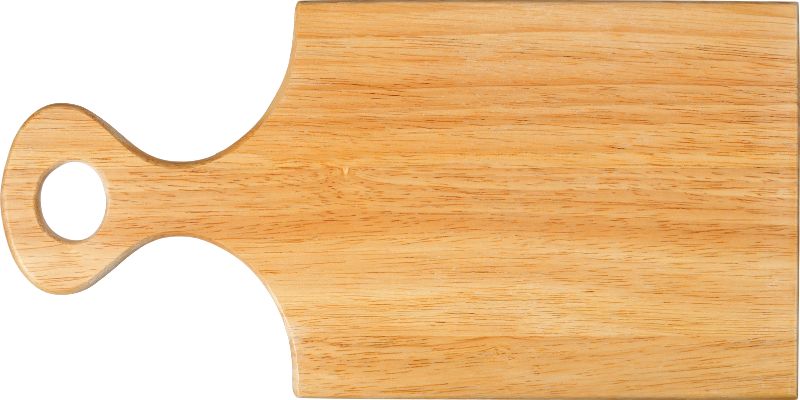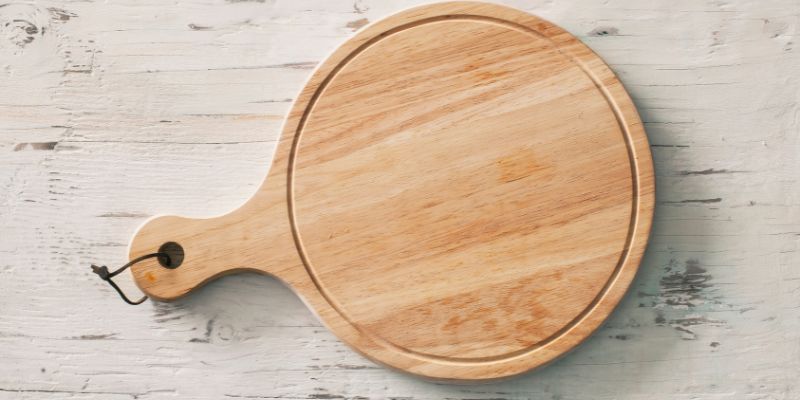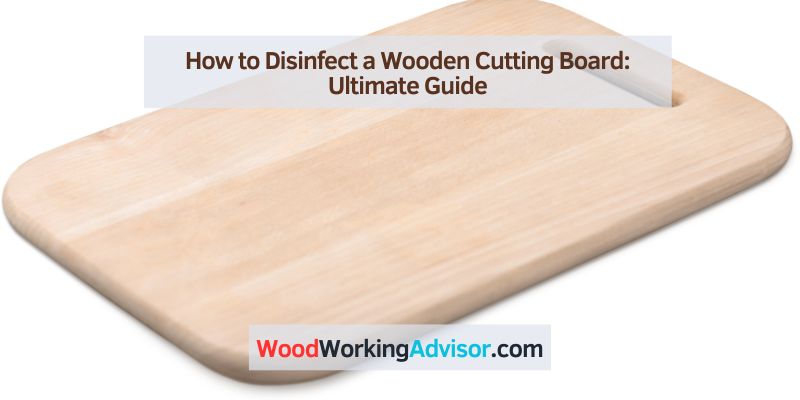To disinfect a wooden cutting board, mix equal parts of water and white vinegar, then apply the solution and let it sit for a few minutes before rinsing off. The wooden cutting board is a kitchen essential used to prepare various foods.
However, without proper cleaning and maintenance, bacterial contamination can occur. Therefore, it is essential to regularly disinfect the cutting board to ensure food safety and prevent cross-contamination. We will provide you with an easy and effective method for disinfecting a wooden cutting board, using natural ingredients that are safe for food preparation.
By following these simple steps, you can maintain a clean and safe cutting surface for your kitchen needs. Let’s explore how to disinfect a wooden cutting board in a few easy steps.
Understanding Wood Porosity
Brief Explanation Of Wood’s Natural Porosity
Wood is a naturally porous material, with microscopic openings that can harbor bacteria and other contaminants if not properly maintained. The pores in the wood create an ideal environment for microorganisms to thrive, making it crucial to understand how to effectively disinfect wooden cutting boards to ensure food safety.
How Porosity Affects Bacteria Growth And Contamination Risks
The porosity of wood directly impacts its susceptibility to bacteria growth and contamination risks. Bacteria can penetrate into the tiny pores of the wood, making it challenging to remove them through simple cleaning methods. The presence of moisture and food particles within the pores creates an environment where bacteria can multiply, posing potential health hazards.

Steps Before Disinfecting
Before you proceed with disinfecting your wooden cutting board, it’s essential to ensure that the surface is thoroughly clean and prepped for the disinfection process. Cleaning debris and residue from the board and prepping the surface play a crucial role in efficiently disinfecting the board. Let’s delve into the detailed steps to prepare your wooden cutting board for disinfection.
Cleaning Debris And Residue From Wooden Cutting Boards
1. Scrubbing: Start by scrubbing the wooden cutting board with a brush or a damp cloth to remove any food debris, stains, or residue that might be lingering on the surface. This step is vital in ensuring that the disinfectant can effectively reach and eliminate any lurking germs or bacteria.
2. Using Natural Cleaners: If there are tough stains, grease, or lingering odors on the cutting board, consider using natural cleaning agents such as lemon juice, baking soda, or salt to tackle these issues. These natural cleaners not only help to remove stains but also assist in neutralizing odors, leaving your cutting board fresh and clean.
Prepping The Surface For Disinfection
1. Rinse with Hot Water: After cleaning the cutting board, rinse it thoroughly with hot water to eliminate any remaining residue from the surface. Hot water also helps to open up the pores of the wood, facilitating better penetration of the disinfectant during the next step.
2. Drying: Once the cutting board has been cleaned and rinsed, ensure that it is completely dry before moving on to the disinfection process. Moisture can promote the growth of bacteria, so drying the cutting board effectively is crucial for maintaining a sanitized surface.
Ultimate Guide To Natural Disinfectants
When it comes to keeping your wooden cutting board clean and free from harmful bacteria, natural disinfectants can be your best friends. Not only are they eco-friendly, but they are also highly effective in killing bacteria. Let’s explore some natural disinfectants that can help you maintain a clean and safe cutting board.
Using Vinegar For Disinfection
Vinegar is a powerful natural disinfectant due to its acidic nature, which helps in killing bacteria and germs. You can create a simple disinfecting solution by mixing equal parts of white vinegar and water. Simply spray the solution onto the cutting board, let it sit for a few minutes, and then rinse it off with water. Vinegar not only disinfects the cutting board but also helps to neutralize odors, making it a great all-round cleaner.
The Role Of Hydrogen Peroxide For Bacteria Elimination
Hydrogen peroxide is another excellent natural disinfectant that is effective in killing bacteria and viruses. Create a solution by mixing equal parts of 3% hydrogen peroxide and water. Apply the solution to the cutting board, let it sit for a few minutes, and then rinse it off. The effervescence of hydrogen peroxide helps in lifting away dirt and debris, leaving your cutting board sanitized and clean.
Salt And Lemon Method – A Dual-purpose Tactic
The combination of salt and lemon not only helps in disinfecting the cutting board but also effectively removes stains and odors. Sprinkle the cutting board with coarse salt and then use half of a lemon to scrub the surface. The abrasiveness of salt, combined with the acidity of lemon, works to eliminate bacteria while also freshening up the cutting board. After scrubbing, rinse the cutting board with water, and it will be clean and sanitized.
Chemical Disinfectants On Wood
When it comes to ensuring the cleanliness and safety of your wooden cutting board, the use of chemical disinfectants requires specific attention and care. Understanding the appropriate methods and products for disinfecting a wooden cutting board with chemical agents is crucial to maintaining a hygienic food preparation surface.
When And How To Use Bleach Safely
Bleach can be a powerful disinfectant for wooden cutting boards when used properly. It is important to use bleach safely to avoid damage to the wood and ensure effective disinfection. If you choose to use bleach, follow these guidelines:
- Dilute the bleach: Mix 1 tablespoon of bleach with 1 gallon of water to create a safe and effective disinfecting solution.
- Sanitize the board: After cleaning the cutting board with dish soap and water, apply the diluted bleach solution and let it sit for a few minutes before rinsing thoroughly.
- Air dry: Allow the cutting board to air dry completely before using it again.
Disinfectant Sprays Suitable For Wooden Cutting Boards
Several disinfectant sprays are suitable for use on wooden cutting boards, providing a convenient and effective way to maintain cleanliness. When selecting a disinfectant spray for your wooden cutting board, look for products that are specifically designed for use on wood and follow these steps:
- Read the label: Ensure the disinfectant spray is safe for wood surfaces by checking the label for compatibility.
- Test on a small area: Before applying the spray to the entire surface of the cutting board, test it on a small, inconspicuous area to ensure it does not cause damage.
- Apply and follow instructions: Spray the disinfectant according to the manufacturer’s instructions, and allow it to sit for the recommended time before wiping or rinsing.
Maintaining A Disinfected Cutting Board
To maintain a disinfected wooden cutting board, start by cleaning it with hot soapy water. Then, sanitize the board by rubbing it with a mixture of vinegar and water or hydrogen peroxide. Let it air dry thoroughly before using it again.
Regularly oil the board to keep it in top condition.
Wooden cutting boards are a valuable tool in any kitchen, but it’s essential to ensure they are properly disinfected to prevent the spread of bacteria. By following these simple maintenance tips, you can keep your wooden cutting board in top condition, while also ensuring it remains a safe and hygienic surface for food preparation.
Drying Techniques That Prevent Warping
Properly drying your wooden cutting board is crucial to prevent warping and cracking. After washing the board with hot, soapy water, use a clean cloth to thoroughly dry the surface. Ensure all moisture is removed, including from any crevices or joints.
Regular Oil Treatment To Maintain Wood Integrity
To maintain the integrity of your wooden cutting board, it’s important to regularly apply a food-safe mineral oil or beeswax. Apply a generous amount of oil to the surface of the board, allowing it to penetrate the wood for several hours or overnight, then wipe off any excess oil. This treatment helps prevent the wood from drying out and cracking, while also creating a protective barrier against moisture.

Storing Your Wooden Cutting Board To Avoid Contamination
Proper storage of your wooden cutting board is essential to prevent contamination. Store the board in a cool, dry place, away from direct heat sources or sunlight. Additionally, store the board in a vertical position to allow air circulation and prevent moisture buildup. Avoid stacking other items on top of the board, as this can also lead to warping and contamination.
By implementing these maintenance practices, you can extend the lifespan of your wooden cutting board and ensure it remains a safe and hygienic surface for food preparation. Regular maintenance not only keeps the board in good condition but also helps to prevent the spread of harmful bacteria.
Frequently Asked Questions Of How To Disinfect A Wooden Cutting Board
Does Vinegar Disinfect Cutting Boards?
Yes, vinegar can effectively disinfect cutting boards due to its acidic properties. It can help to kill bacteria and sanitize the surface. Regularly cleaning with a solution of vinegar and water can keep your cutting board clean and safe for use.
How Do You Keep A Wooden Cutting Board Sanitary?
To keep a wooden cutting board sanitary, regularly wash it with hot, soapy water. Disinfect with a solution of water and white vinegar. Dry it thoroughly after cleaning. Apply mineral oil to prevent cracking and maintain the board’s condition. Avoid dishwasher and direct exposure to sunlight.
What Natural Disinfectant Is Excellent For Cleaning Cutting Boards?
White vinegar is a natural disinfectant excellent for cleaning cutting boards. Its acidic properties help kill bacteria and germs effectively. To use, simply dilute with water and wipe the cutting board surface. This eco-friendly solution is safe and efficient for keeping cutting boards sanitized.
Can You Use Lysol Wipes On Wood Cutting Board?
Yes, you can use Lysol wipes on wood cutting boards as they are safe for use on wood surfaces. Ensure to wipe it thoroughly and let it air dry before using the cutting board for food preparation. Regularly oil the wood to maintain its quality and prevent any damage.
Conclusion
In short, it’s crucial to regularly clean and disinfect your wooden cutting board to ensure food safety. By using simple ingredients like vinegar and hydrogen peroxide, you can effectively kill bacteria and maintain a hygienic kitchen environment. Don’t forget to oil your board to prevent it from warping and cracking.
Prioritize cleanliness for a healthy cooking experience.



5 thoughts on “How to Disinfect a Wooden Cutting Board: Ultimate Guide”